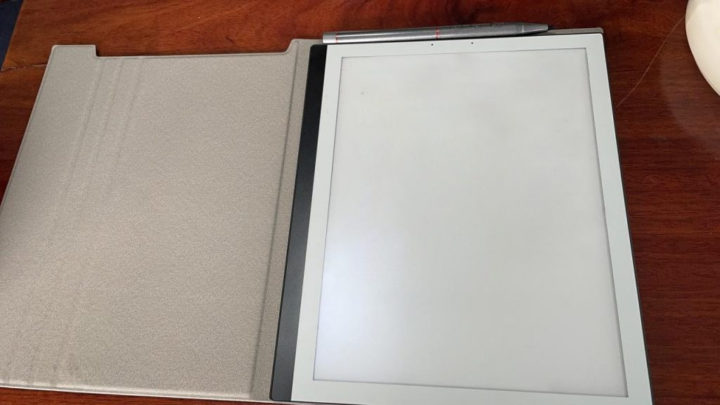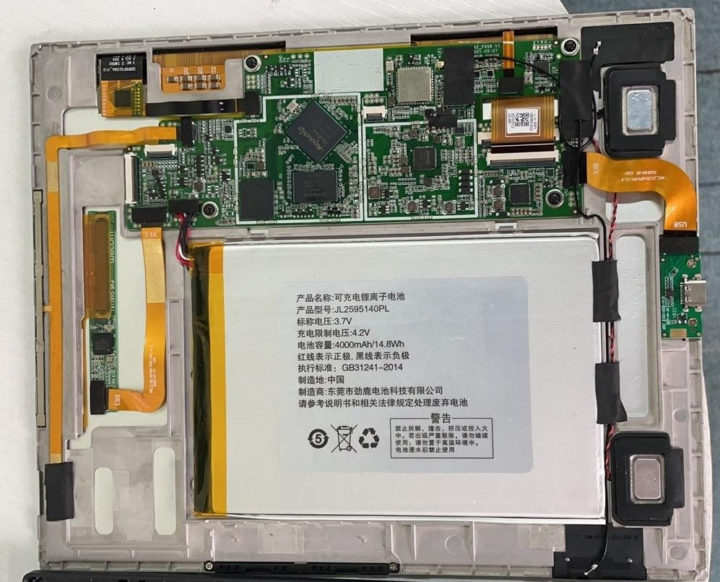We’ve covered several e-readers in the past, but the PineNote 10.3-inch e-reader will be a bit different, as the hardware & software will be entirely developed by the community like other Pine64 platforms such as Pinebook Pro, PineCone, Rock64 single board computer, etc…
Based on the Rockchip RK3566 quad-core Cortex-A55 processor, PineNote will be one of the fastest e-readers on the market, and leverage the code already written for Quartz64 single board computer, including mainline Linux support.
PineNote (preliminary) specifications:
- SoC – Rockchip RK3566 quad-core A55 processor with Mali-G52 EE GPU, 0.8 TOPS NPU (AI accelerator)
- System Memory – 4GB of LPDDR4 RAM
- Storage – 128GB eMMC flash
- Display – 10.3-inch panel with 1404×1872 resolution (227 DPI), 16 levels of grayscale, front light with cool (white) to warm (amber) light adjustment, capacitive glass layer for finger touch-based input, and a Wacom electromagnetic resonance layer (EMR) for EMR pen input. There’s also a scratch-resistant hardened glass covering the display
- Audio – 4x microphones, 2x speakers
- Connectivity – Dual-band 802.11b/g/n/ac WiFi 5, Bluetooth: 5.0
- USB – 1x USB-C port for fast charging and data
- Sensor – G-Sensor for portrait and landscape sensing
- Battery – 4,000mAh/14.8Wh
- Power Supply – 5V/3A via USB-C power
- Dimensions – 191.1 x 232.5 x 7.4mm, or about 1mm thinner than the Amazon Kindle Oasis 3
- Weight – 438 grams
- Materials – magnesium alloy inner frame, plastic back cover
The PineNote will ship with an optional magnetic cover and EMR pen equipped with a faint LED power on/off indicator, a previous/ next page button as well as an eraser button.
The e-reader will eventually be able to run much of the same Linux distributions as on for the Quartz64 board and Linux 5.x mainline. But initially, the first “early adopters” samples will most likely come with Manjaro on top of Linux 4.19, and the display may be work just yet depending on whether the driver is ready.
Eventually, people will be able to read books, comics, take notes and sketches, run programs like LibreOffice (preferably with an additional keyboard), and more. But note this will take time. For instance, the PinePhone “BraveHeart” edition was first released in November 2019, and while tremendous progress has been made since then, there are still some issues at the edge, as we’ve seen when trying to use PinePhone as a hotspot. That means even after over 20 months following the initial samples were released you may still have to play around with config files, try out multiple operating systems to find the one that works for you, or even recompile the Linux kernel. Luckily, there’s an active community to help out.
Pine64 expects to make PineNote available to early adopters later this year for $399, including the magnetic cover and the EMR pen. The price is quite competitive compared to other e-readers with a 10.3-inch display such as BOOX Note2 or Geniatech’s Kloudnote (Rockchip PX30 based) sold for around $450 to $480.
Via Pine64 blog

Jean-Luc started CNX Software in 2010 as a part-time endeavor, before quitting his job as a software engineering manager, and starting to write daily news, and reviews full time later in 2011.
Support CNX Software! Donate via cryptocurrencies, become a Patron on Patreon, or purchase goods on Amazon or Aliexpress






